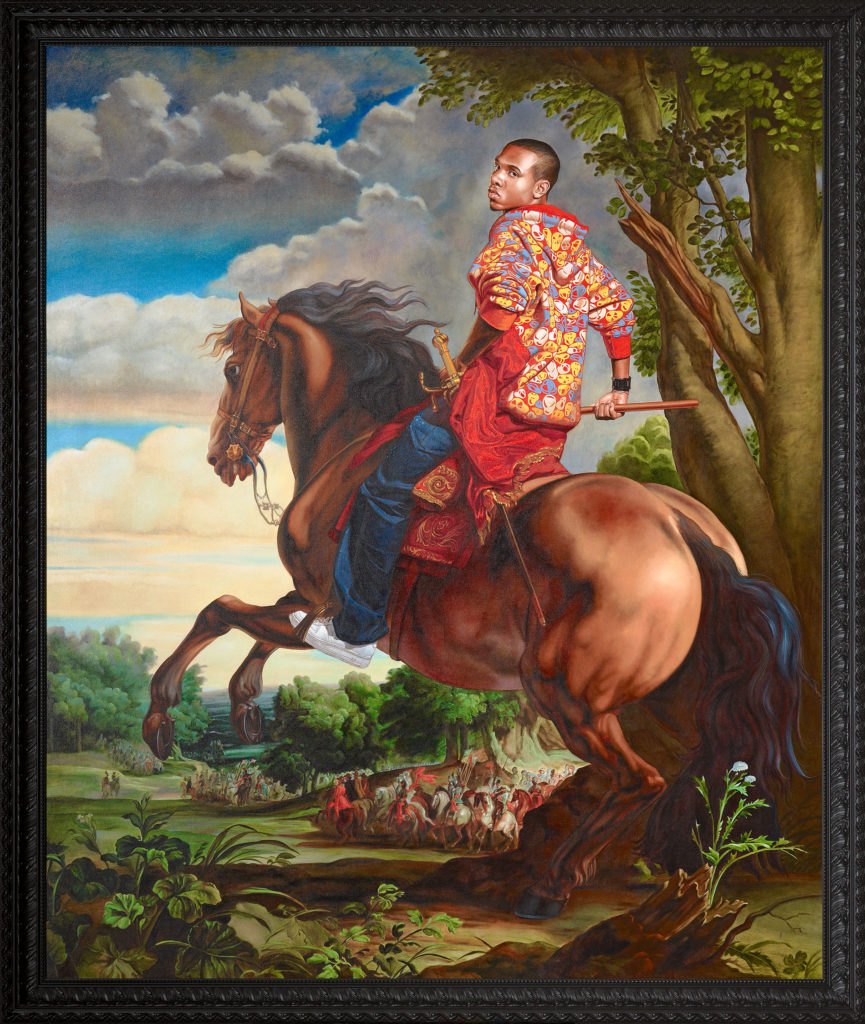In this occasional series, Fine Art Today delves into the world of portraiture, highlighting historical and contemporary examples of superb quality and skill. This week: Kehinde Wiley, “Duc D’Arenberg.”
This year’s presidential election and increased awareness of racial tensions in the United States have made the magnificent works of Brooklyn-based painter Kehinde Wiley even more potent — which seems hard to imagine. Although Wiley has firmly situated himself within art history’s portrait painting tradition, he’s added his own creative flare in remarkable ways that have vaulted him to international success.
This week’s featured portrait is a fabulous painting that illustrates well Wiley’s artistic genius. At first glance, the monumental “Duc D’Arenberg” adheres beautifully to the traditions of equestrian portraits. A strong and rearing stallion forms the center of the composition, with bulging muscles and a flowing mane. The landscape beyond shows troops and cavalry marching toward the shores of an unknown body of water. But in a striking break from tradition, the portrait’s subject is a young African-American man, dressed in brilliant contemporary clothing. With sword at his side and mace in hand, the figure gazes sternly over his left shoulder and at the viewer. The confrontation seems confident, masculine, and empowering. Particularly noteworthy is the sitter’s hooded sweatshirt, which displays a brilliant pattern that contrasts sharply with its more natural surroundings.

Via Wiley’s webpage, the artist writes that he “engages the signs and visual rhetoric of the heroic, powerful, majestic and the sublime in his representation of urban, black, and brown men found through the world. By applying the visual vocabulary and conventions of glorification, history, wealth and prestige to the subject matter drawn from the urban fabric, the subjects and stylistic references for the paintings are juxtaposed inversions of each other, forcing ambiguity and provocative perplexity to pervade it.”
To learn more, visit Kehinde Wiley.
This article was featured in Fine Art Today, a weekly e-newsletter from Fine Art Connoisseur magazine. To start receiving Fine Art Today for free, click here.







